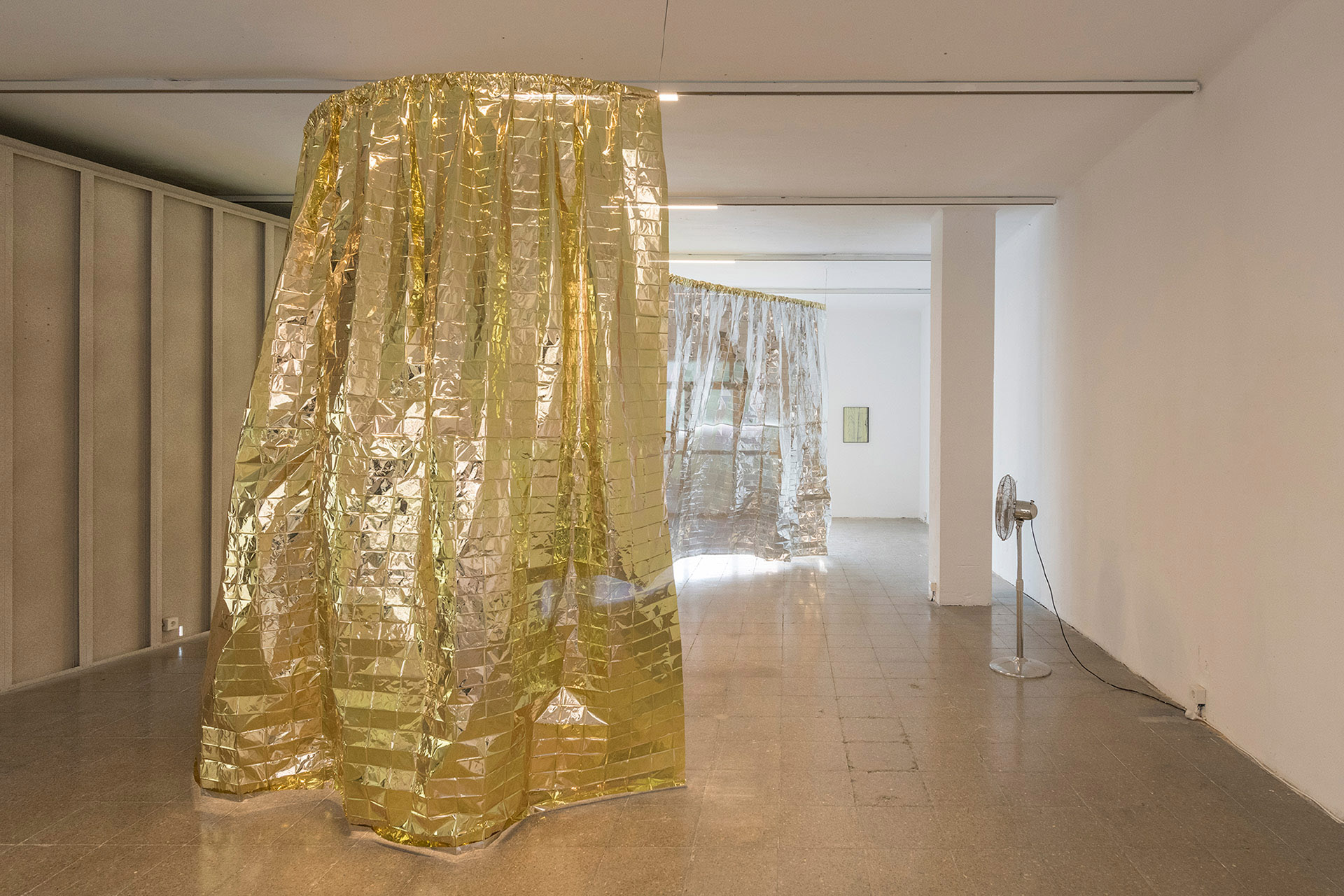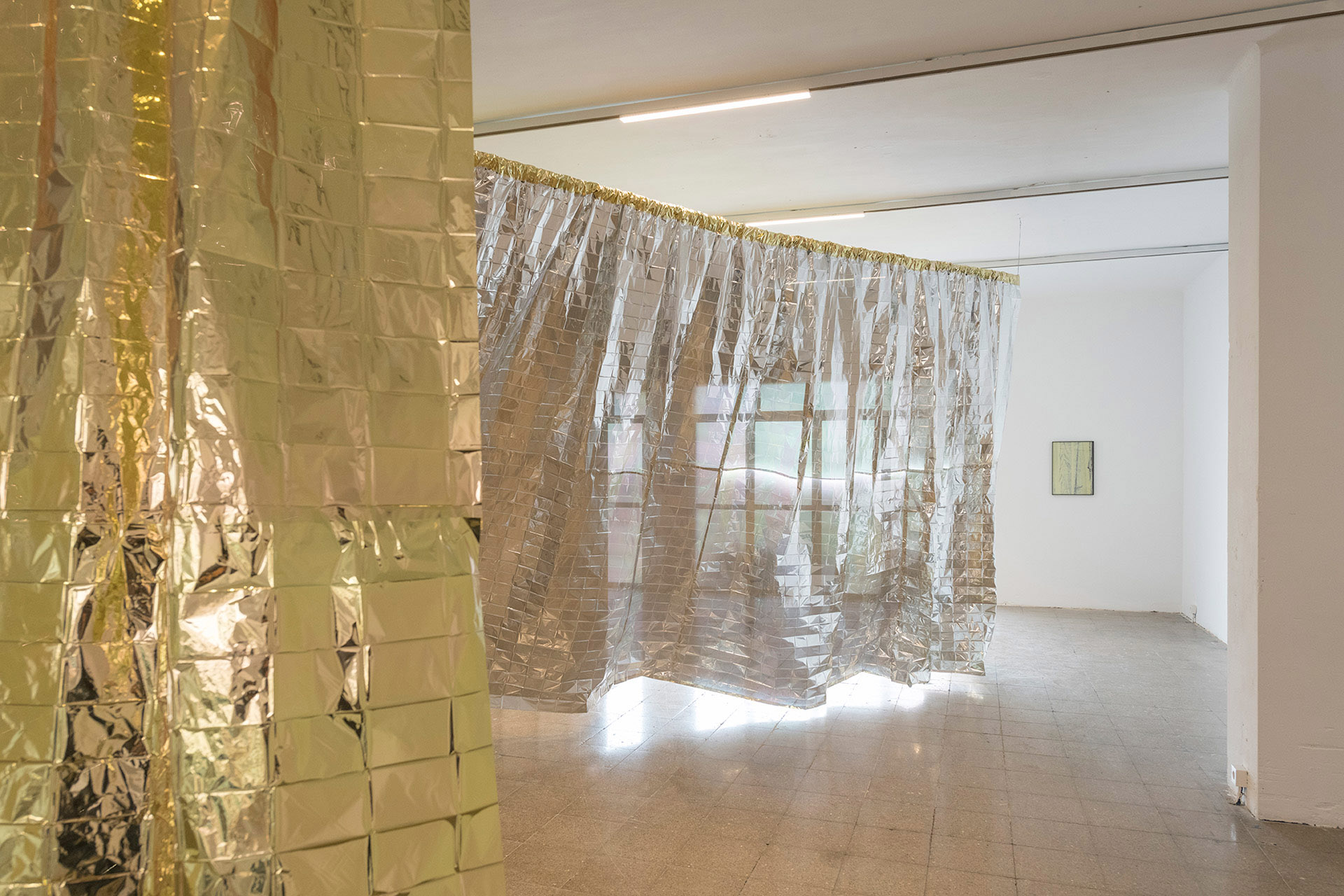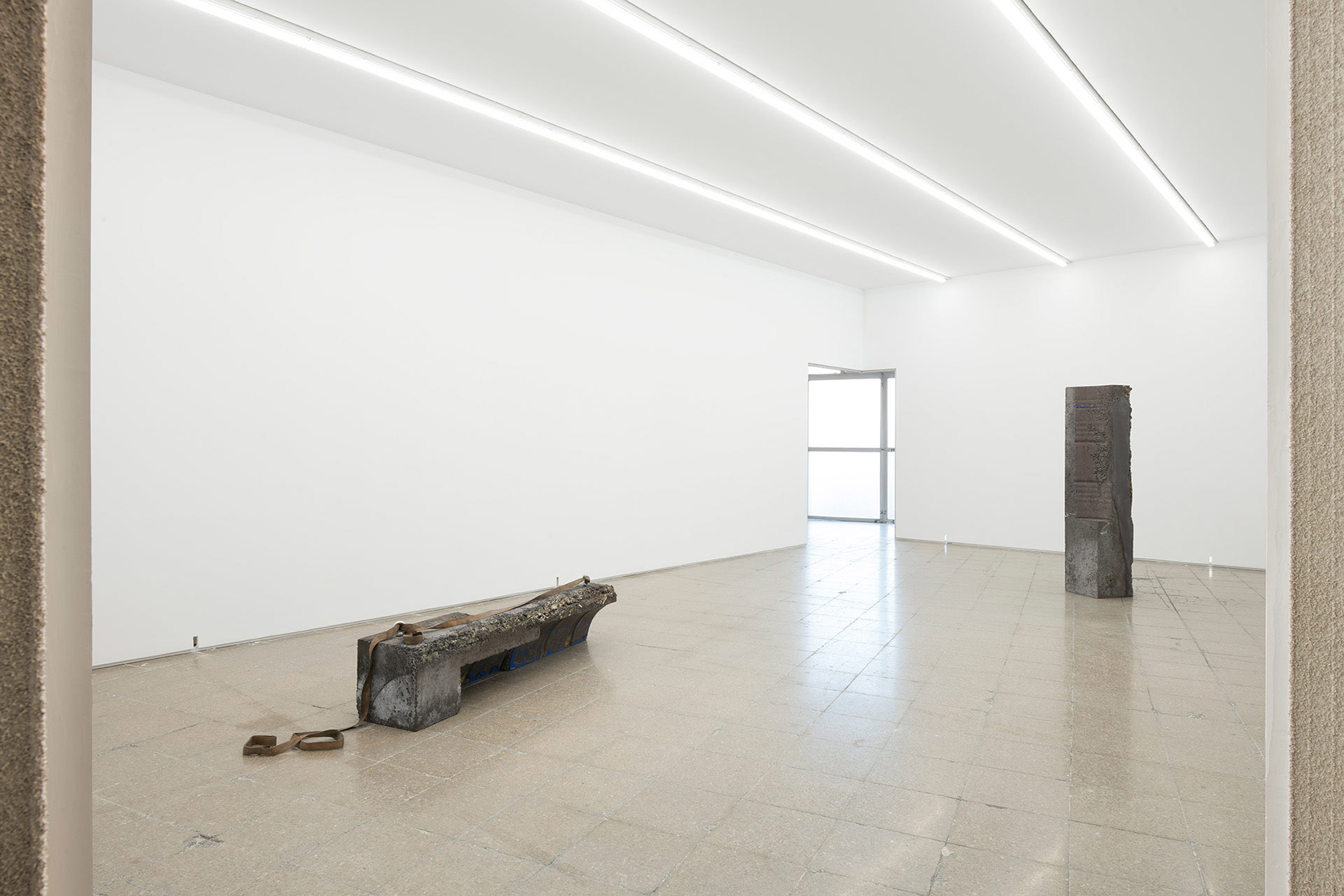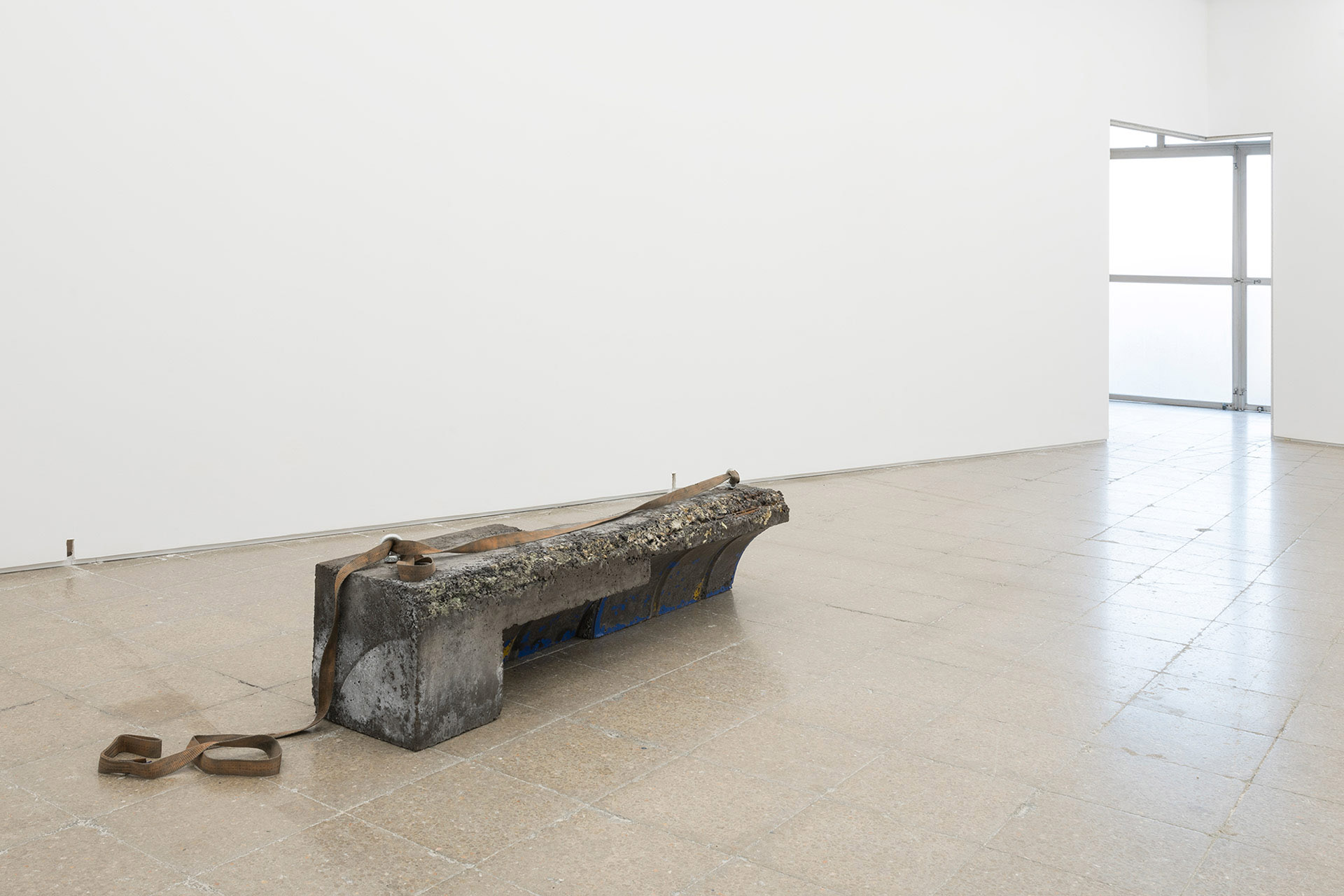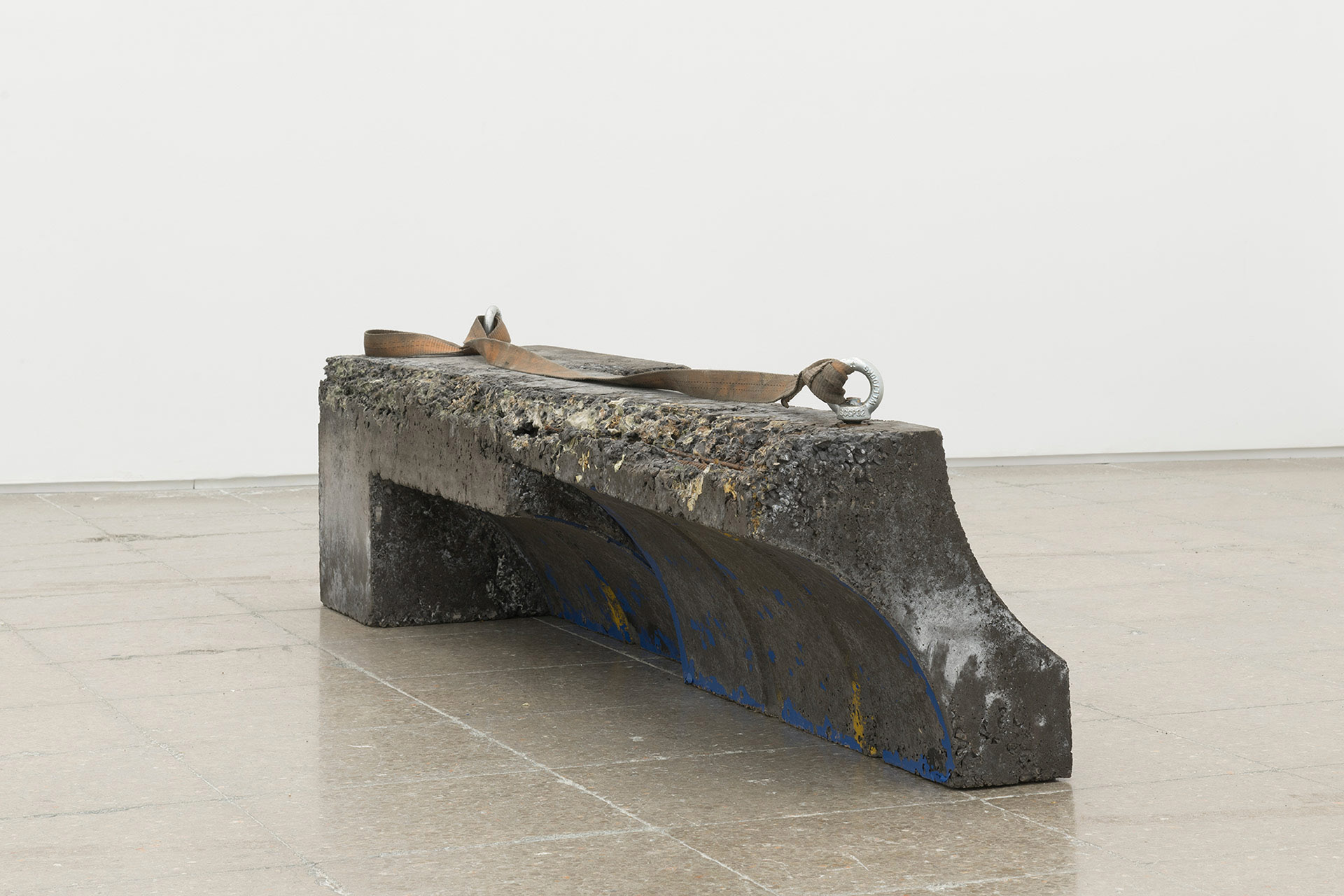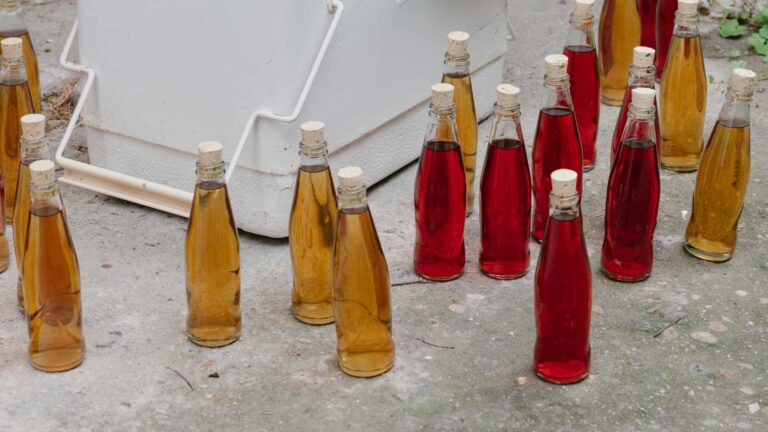Artists: Céline Condorelli, June Crespo
Exhibition title: Aliento
Curated by: Anna Manubens
Venue: Nogueras Blanchard, Barcelona, Spain
Date: January 23 – March 12, 2021
Photography: Roberto Ruiz., all images copyright and courtesy of the artists and Nogueras Blanchard, Madrid
“At some crisis times like this one” writes Lauren Berlant, “politics is defined by a collectively held sense that a glitch has appeared in the reproduction of life. A glitch is an interruption within a transition, a troubled transmission. A glitch is also the revelation of an infrastructural failure.” [1] Recent events have exposed weak structures and in facing their flimsy nature, it is becoming urgent to summon a form of infrastructural imagination that would be applied to the repair or rethinking of what holds and regulates our forms of life in common.
The dialogue between Céline Condorelli and June Crespo is an attempt to call for the type of imagination that brings infrastructure to the fore. Their work function as a poetics, an aesthetic and a politics of support. What is to be seen is what sustains, that which holds together, the conditions that make a relationship possible, either in a literal sense – a material confluence – or in an affective or conceptual sense.
Céline Condorelli’s work includes an ongoing and careful inquiry on the notion of support in a broad sense. Perhaps the most paradigmatic example would be her long-term project Support Structures (2003-2009). But her attention to forms of support has also led her to design exhibition structures for third parties, to review projects of participatory architecture or to think of friendship in terms of support. The Company she Keeps, a book edited by the artist that is part of the exhibition, brings together a series of conversations around friendship whilst being an expression of friendship. For Condorelli the latter is not only a form of relationship but also something that drives her work at an infrastructural level: “Friendship is perhaps a condition of work in my practice—even though it may never be the actual subject of the work, however close it is to a long term object of my practice, support—but a formative, operational condition that works on multiple, simultaneous levels.” Friendship is a methodological preference; a mode of thinking and engaging. It is a relationship that lasts over time with friends of course, but also with objects, thoughts and references that one befriends and keeps in close dialogue. The title of the book is taken from Hannah Arendt ‘s description of culture which quite accurately corresponds to how the artist understands friendship; “the company that one chooses to keep, in the present as well as in the past” [2]
The sculpture presented at NoguerasBlanchard, Structure for Communicating with the Wind belongs to the series titled Additionals that brings together objects made from prop-making techniques. Each of the objects has a pseudo-functionality; communicating, listening, preparing, reading, and public speaking. They were conceived to enable different relationships between the characters that appear in The Tiger’s Mind, a score by experimental Bristish composer Cornelius Cardew. The sculpture in display is conceived so as to enable to communication between Tiger and Wind, two of Cardew’s characters. The movement of the curtain recalls the sound of trees in the wind and in the same gesture makes the tinest air circulation visible. The sculpture becomes an interface that both creates and makes visible the conditions for a conversation.
The couple of sculptures presented by June Crespo arise at the intersection between two previous projects. In 2019, in Mexico she worked on the space generated by seismic movements between buildings. The resulting sculpture showed the positive space between the walls. The title, Espacio de ti a mi [Space from me to you], forces an overlap between architectural space and affective and bodily space. Also in 2019, for an exhibition curated by David Bestué in Plaza de Can Colom, very close to Nogueras Blanchard, the artist made horizontal concrete blocks with concave hollows conceived to surround a lying body. Drawing on features from both projects, the sculptures presented in the framework of A L I E N T O are the trace left by a an encounter and at the same time that which made it possible or will make it possible. It is the testimony of a past convergence, or the space to encourage an upcoming one. In any case, the concrete is what holds the volumes. Insisting on this idea, the title of the pieces, Core, refers to the trunk, the part of the body that supports the rest.
June Crespo speaks of her moulds as something that begins as a record but is later modified in an operation she calls “editing”: “I started making moulds of the spaces where I lived or worked
(…). Later, I started editing them, adding flowers, mud … deforming them ”. Perhaps the common denominator between both artists is this edition of encounters: their intervention in infrastruc-tural conditions that can prompt or protect interactions. In two highly contrasted versions, the one light and flexible; the other rugged and immovable, both are shifting the connotations of materials that are usually used to compartmentalize and isolate. Here, on the contrary, they lead to forms of encounter and relationship. Materials that tend to be associated with segregation and emergency here stand for a structural and sensual perception of coming together.
-Anna Manubens
[1] Berlant, Lauren ‘The commons: Infrastructures for troubling times’. Environment and Planning D: Society and Space. Nº34. (2016)
[2] Hannah Arendt, “The Crisis in Culture: Its Social and Its Political Significance”, Between Past and Future: Eight Exercises in Political Thought, Faber and Faber, London, 1961, p. 226.











